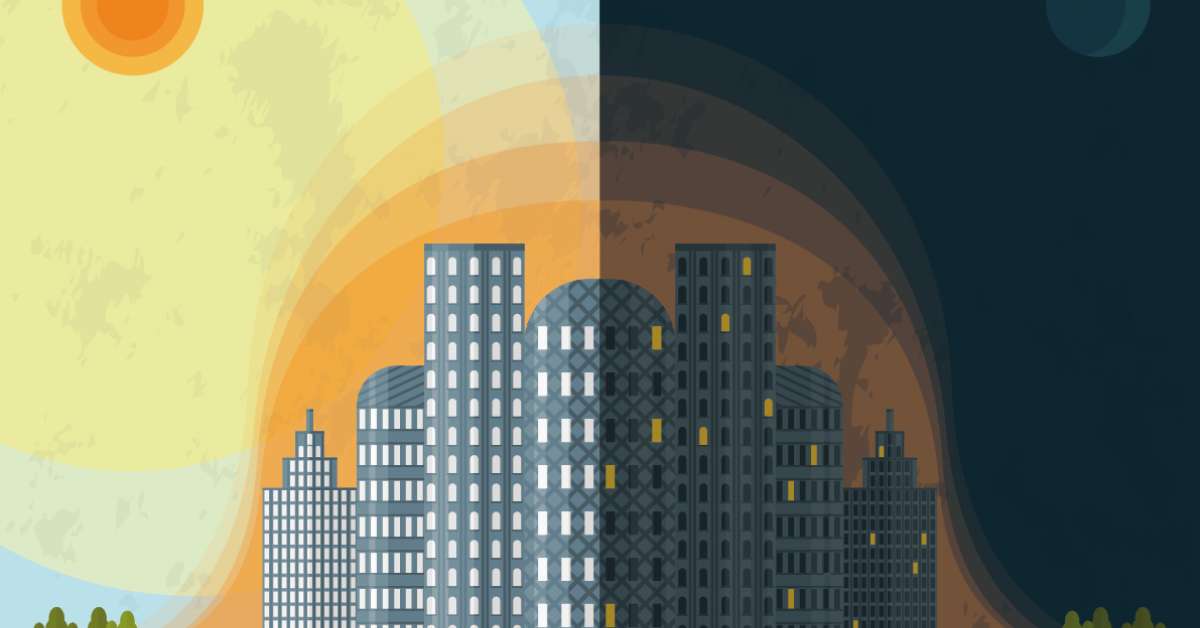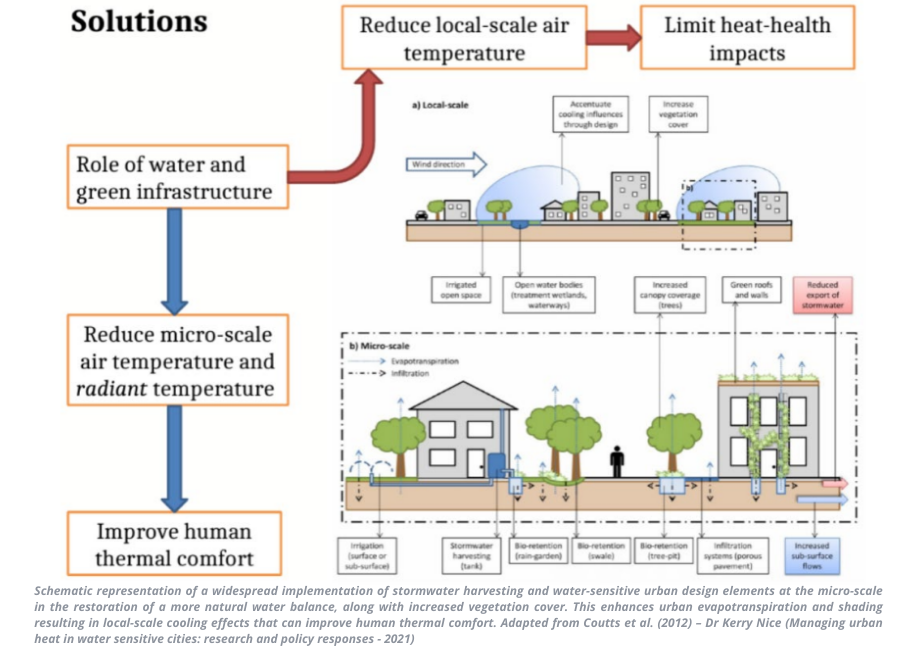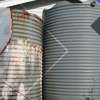16 August 2022
How stormwater harvesting can reduce urban heat island
Urban heat is an increasing threat to the liveability and productivity of cities, made worse by more frequent and extreme heat days and heat waves caused by climate change. Then again, climate change causes more intense rainfall events raising questions about flooding and damage to fragile waterways. What makes rainwater harvesting a good solution for these problems?

In a forested landscape, water follows a cycle that has been developed over millions of years and has multiple benefits. While about 40 per cent of rainfall is evaporated or transpired back into the atmosphere, the other 40 per cent seeps into the water table through permeable topsoil, and only about 20 per cent of rainfall travels into waterways. The transpiration and evaporation of the water back into the atmosphere has a substantial cooling effect, supporting future rainfall and ensuring enough moisture in the air. Permeable topsoil allows the water table constantly and slowly trickle water into waterways, consequently, the rivers continue to flow cool, clean water even during a dry spell. However, this system is essentially reversed in urban areas – most of the rainfall (about 80 per cent) has no other option than to flow directly into the local creek, rivers, and streams, and less of it gets returned to the atmosphere. Because there are not many plants to absorb the water, and impermeable infrastructures like buildings and roads stop rainfall from reaching the water table. Not only this system of fast-moving water damage stream ecologies adapted to groundwater flow and cause more floods but also less transpiration contributes to the heat island effect and increases the chances of future droughts.
Heat Islands
Not having the opportunity to absorb and re-emit the sun’s heat in urban areas where greenery is limited, become “islands” of higher temperatures relative to remote areas. These pockets of heat are known as “heat islands” and they can form under a variety of conditions, including in small or large cities, in suburban areas, during the day or night, in northern or southern climates, and any season.
The design of cities where there are surfaces with lower albedos, conversion of vegetated surfaces to hard surfaces with higher heat storage capacity, waste heat from buildings and transport, reduced shading and reduced canopy cover and reduction of available water has altered the energy balances in urban areas leaving cities vulnerable to more extreme heat.
This is expected to get worse as the continual development of impermeable surfaces in cities is increasing (from 65 per cent per block to 90 per cent) which gives water even less opportunity to seep naturally into the water table. This could worsen the impact of climate change and cause drastic changes in our weather, which is already happening.
*Reports show excess heat in Australia is seen through significant impacts on mental health, domestic violence, damage to urban infrastructure, strains on emergency and health services, economic disruptions, and in many other areas. Increased pulse of climate change trends also leads to population collapses of a wide variety of Australian biota. While urban heat is a problem with wide-ranging implications and the impacts on human health can be especially costly, extreme heat events cause more deaths in Australia than any other natural hazard.

Australian businesses are continuing to find solutions to this growing problem, and we believe that rainwater harvesting can be a great part of these solutions. The Australian Rainfall and Runoff Guidelines 2019 recognise managing stormwater should be at the source’ and through volume reduction which contributes to rainwater harvesting. Rainwater tanks won’t stop the flooding, but they reduce the impact of events up to one in 10-year events.
Strategic use of water efficiency, rainwater, stormwater and wastewater at multiple levels can improve the performance of centralised water supply systems to deliver more sustainable and affordable outcomes (Victorian Government, 2013) leading to long-run economic benefits.

Rainwater harvesting and management are as simple and beneficial as it sounds: we can stop rainfall from flowing directly into waterways by catching rainwater in water tanks which creates so many other opportunities in return including diverting the volume as a utility water replacement to use at the household level for irrigation, washing machines and flushing toilets, somewhat similarly to natural evapotranspiration and groundwater replenishment. Added benefits of this system are that it reduces the need for water to be stored in dams, and pumping water long distances uses a lot of energy. If every building has at least a small rainwater tank, there are many benefits including good health of local waterways, reduced cost of water infrastructure and reserve water stores in the event of a crisis.
This is a technique that has been used for thousands of years in many parts of the globe to capture and store rainwater in the pores of soil or for human use. Growing water scarcity, rapid urbanisation, climate change and increased demand for water are once again making this ancient technology an attractive option for retaining the moisture to help decrease the heat island effect.


